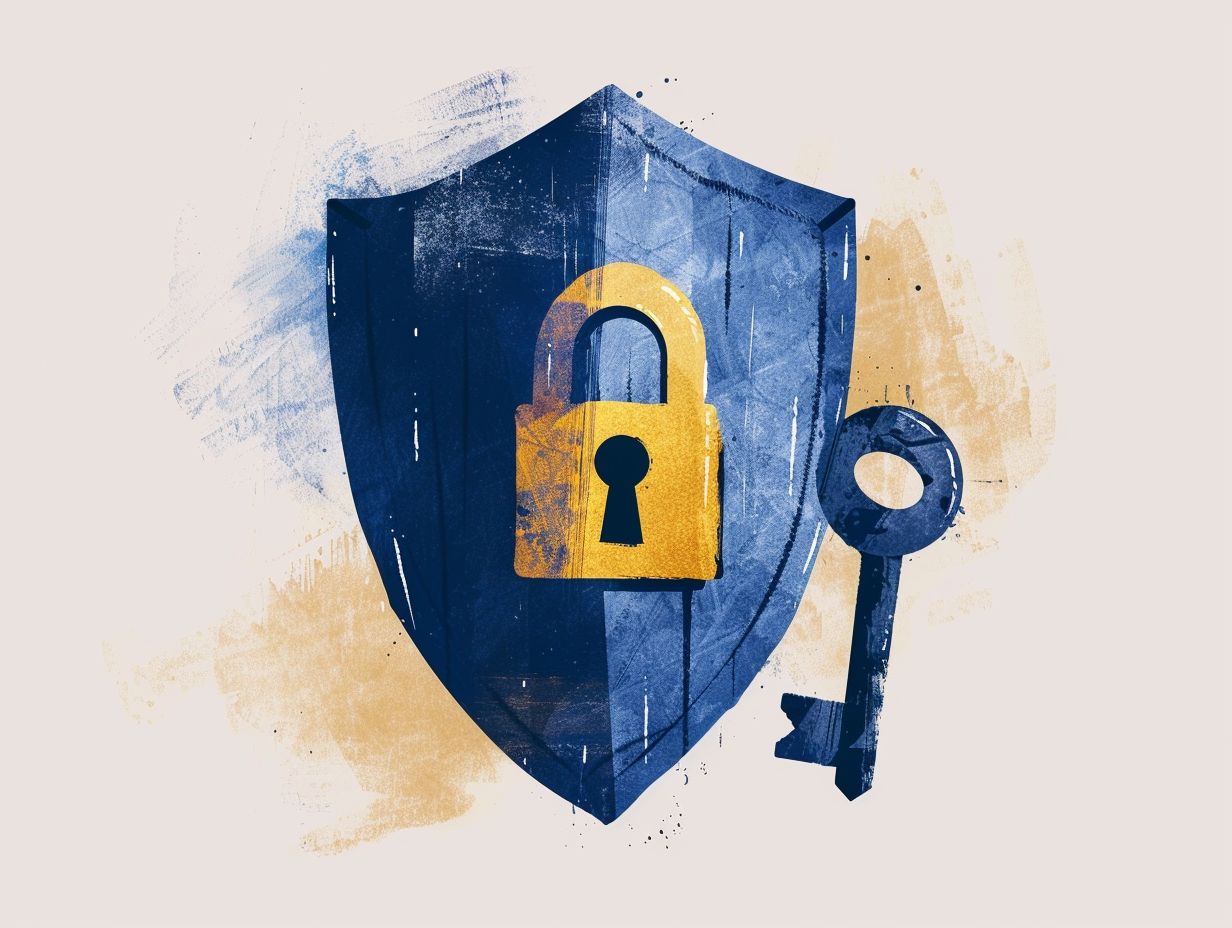Data loss can be a nightmare for any computer user, which is why backing up your data is crucial.
You should explore different types of Linux backup solutions, from local backup tools to cloud-based services.
Important factors to consider when choosing a backup solution include cost, storage capacity, security, and reliability.
You need to consider best practices for creating a backup strategy, including regular backups, offsite storage, and redundancy.
Be prepared for a step-by-step guide on how to backup your Linux system and steps to recover data from a backup.
Key Takeaways:

Why Backing Up Your Data is Important
Backing up your data is essential for securing your valuable information and ensuring that you can recover it in case of any unforeseen events or data loss. When you have a reliable data backup system in place, you are taking a proactive approach towards safeguarding your files, documents, and other important data from potential threats like system crashes, malware attacks, or accidental deletions.
The consequences of losing critical data can be severe, impacting not only personal files but also business operations and sensitive information. With an efficient backup strategy, you not only enhance the security of your data but also gain the peace of mind knowing that you have a safety net for quick and efficient recovery whenever needed.
Types of Linux Backup Solutions
Linux provides a range of backup solutions to meet diverse needs, offering a selection of local backup tools and cloud-based services, each with its own unique features and capabilities.
Local Linux backup tools, such as Duplicity and Rsync, offer users efficient and customizable options for backing up data to external storage devices or network locations. These tools feature command-line interfaces that enable advanced users to schedule automated backups and maintain data integrity.
In contrast, cloud-based services like Backblaze and Dropbox present convenient off-site storage solutions, enabling users to access their backups from anywhere with an internet connection. These services often incorporate features such as versioning, encryption, and straightforward restoration options to enhance data protection and accessibility.
Local Backup Tools
Local backup tools are crucial for creating duplicates of your data on either the same system or an external storage medium. This capability allows you to execute incremental backups and effectively secure your files.
These tools play a vital role in protecting your crucial information by offering a range of storage options, which may include local drives, network-attached storage (NAS), or cloud storage solutions. Users have the flexibility to set up backups to run at specific intervals, ensuring that their data is consistently saved without requiring manual intervention. The automated backup process streamlines workflows, enabling seamless file protection without the necessity for continuous oversight.
Equipped with features like compression and encryption, these tools provide a comprehensive solution for managing and safeguarding data within Linux systems.
Cloud-Based Backup Services
Cloud-based backup services allow you to securely store your data on remote servers over the network, offering a convenient and reliable solution for remote backup operations while ensuring data security.
These services are essential for safeguarding Linux system data as they provide automated backup processes, eliminating the need for manual backups. With cloud-based backup services, you can access your data from any location at any time, facilitating enhanced collaboration and productivity among multiple users or teams. The network configuration of these services is specifically designed to ensure seamless connectivity and data transfer, ensuring efficient backup operations for Linux systems. Security features such as encryption protocols and multi-factor authentication are in place to provide additional layers of protection, preventing unauthorized access and data breaches.
Factors to Consider When Choosing a Backup Solution

When selecting a backup solution for your Linux system, you need to consider several factors to ensure that your data is well-protected and easily recoverable.
First and foremost, cost, storage capacity, security features, and reliability are crucial aspects that should guide your decision-making process.
Cost-effectiveness is a significant determinant in choosing the most suitable backup solution that aligns with your needs while also adhering to budget constraints. Additionally, storage capacity is a key consideration as it dictates the amount of data that can be backed up and stored effectively.
Furthermore, implementing robust security measures such as encryption and access controls is essential to safeguard sensitive information from unauthorized access and potential cyber threats.
Lastly, reliability is of utmost importance to guarantee seamless access to backups and successful restoration whenever the need arises, ensuring no disruptions or failures in the process.
Cost and Storage Capacity
When evaluating a backup solution, you must consider cost and storage capacity as crucial factors. These elements play a vital role in determining the system’s ability to efficiently store and recover data.
It is imperative for organizations to keep costs at a minimum while ensuring they have adequate storage space. This balance is essential for streamlining data management processes and improving recovery operations. The right combination of cost-effectiveness and storage capacity can have a significant impact on the overall efficiency of backup operations.
Insufficient storage space can impede data recovery efforts, leading to potential data loss and prolonged downtime. Aligning the backup solution with the organization’s specific needs optimizes system resources, enhances data management practices, and ensures seamless recovery procedures.
Security and Reliability
Security and reliability are crucial in ensuring the integrity of your backup data. By implementing encryption and robust backup processes, you can protect your data from unauthorized access and potential loss.
Encryption serves as a protective barrier by encoding your data. If there is a breach, the information remains unintelligible to unauthorized users. Additionally, authentication mechanisms verify the identity of individuals attempting to access the backup data, further enhancing security.
Secure data management practices guarantee that data is stored, transferred, and accessed in a secure environment, minimizing the risk of tampering or corruption. By integrating these components into your backup solutions, you can strengthen your defenses against cyber threats and uphold the reliability of your data backups for efficient recovery procedures.
Best Practices for Creating a Backup Strategy
Regarding efficient data management, you must implement best practices for creating a backup strategy. This ensures that your backups are automated, regular, and tested to maintain the integrity and availability of your critical information.
Establishing a clear backup schedule that aligns with the frequency of data updates is key to minimizing data loss in the event of system failure or other disasters. Automated backups simplify the process, reducing the risk of human error and ensuring consistency.
Regularly testing backups is essential to identify any potential issues and validate the recovery process, ensuring that your data can be restored effectively. By implementing a well-defined backup strategy, you create a safety net for your data, protecting it against unforeseen circumstances and enabling swift recovery when necessary.
Regular Backups and Testing
Incorporating regular backups and testing into your backup strategy is crucial to guarantee that your data remains consistently backed up and recoverable in the event of system failures or data loss.
Regular backups consist of duplicating your crucial data at planned intervals, offering a safety measure against potential data loss scenarios like hardware malfunctions, cyberattacks, or inadvertent deletions.
Regularly testing backups is imperative to validate their integrity and usability when necessary. By conducting simulated data recovery processes to verify the restoration procedure, businesses can mitigate risks and ensure that their backup strategy is dependable and capable of efficiently restoring critical information.
Offsite Storage and Redundancy

Incorporating offsite storage and redundancy into your backup strategy is crucial for enhancing data protection and ensuring that your backup data is securely stored in separate locations from your primary system.
The practice of duplicating data and storing it in multiple secure locations is vital in safeguarding against potential data loss resulting from unforeseen events like hardware failures, natural disasters, or cyber attacks. By maintaining copies of your data offsite, you decrease the risk of losing important information and improve the chances of a swift recovery in the event of unexpected circumstances.
Efficiently managing storage space in offsite backups enables scalability and flexibility in accommodating the growth of data volumes while also maintaining cost-effectiveness.
How to Backup Your Linux System
Backing up your Linux system involves configuring backup tools such as Rsync to automate the backup process, enable incremental backups, and ensure the secure storage of your user data and system files.
When setting up Rsync for backups, you can start by installing the package on your system if it’s not already there. You can then configure the Rsync daemon to run automatically at scheduled intervals.
To secure your data, consider setting up encryption for your backups to prevent unauthorized access. It’s also crucial to determine the storage location for your backups, whether it’s an external hard drive, network-attached storage (NAS), or cloud storage.
By configuring backup options correctly, you can ensure smooth and reliable backups for your Linux system.
Step-by-Step Guide for Different Backup Methods
When creating backups on a Linux server, you have several methods to choose from, including full backups, incremental backups, and differential backups. Each method offers specific advantages for restoring files and directories in the event of data loss.
Full backups involve copying all data every time they are performed, providing a comprehensive snapshot of the entire system at a specific point in time. While this method is the most straightforward, it can be time and resource-intensive. On the other hand, incremental backups only save data that has changed since the last backup, helping conserve storage space and reduce backup time.
Differential backups save all changes since the last full backup, making them quicker to restore compared to incremental backups. Understanding the nuances of each method is essential for effective backup configuration and efficient file restoration.
Recovering Data from a Backup
When recovering data from a backup, you need to restore files and directories from your backup storage to the original system in order to ensure the efficient and effective recovery of your critical data.
The process typically commences by identifying the specific files or directories that require recovery, which should be chosen based on their importance or relevance. Once the data is identified, you can initiate the restoration steps by accessing the backup storage, verifying the integrity of the backup, and then transferring the selected files back to their original location.
In Linux systems, there are various tools and methods available for file recovery. These include using command-line tools like tar or cpio, or employing graphical user interfaces for a more user-friendly experience. It is essential to adhere to best practices during the file restoration process. This includes ensuring that the backup is up-to-date, regularly testing the restoration process to prevent any surprises during a crisis, and maintaining proper security measures to protect the recovered data.
Steps to Restore Data from Backup
Restoring data from a backup involves following specific steps to retrieve files and directories from the backup storage and transfer them back to the original system, ensuring that your data is successfully recovered and accessible.
- Begin the data restoration process by identifying the backup source containing the necessary files and directories.
- Once the backup source is identified, initiate the restoration process by selecting the specific files or directories you intend to recover.
- Maintain the integrity of the original data during the transfer process to prevent any loss or corruption.
- After selecting the files, proceed to restore them to the designated location on your system by following the prompts and instructions provided by the backup software.
- By methodically following each step, you can efficiently recover your valuable data and resume regular operations.
Frequently Asked Questions

What is the importance of having a Linux backup solution?
A Linux backup solution is crucial for protecting your important data from any potential threats or disasters. It ensures that your files and system settings are backed up regularly, so you can easily restore them in case of data loss.
What are some popular tools for Linux backup solutions?
Some popular tools for Linux backup solutions include rsync, Bacula, Amanda, and Duplicity. These tools offer various features and capabilities for data backup and protection.
Are there any free options for Linux backup solutions?
Yes, there are several free and open-source options for Linux backup solutions, such as Duplicity, BorgBackup, and EaseUS Todo Backup. These tools offer reliable backup and data protection without any cost.
What is the recommended backup frequency for Linux systems?
The recommended backup frequency for Linux systems depends on the type of data and how frequently it is updated. For critical data, it is recommended to have daily backups, while for less important data, weekly or monthly backups may suffice.
Can a Linux backup solution be used for disaster recovery?
Yes, a Linux backup solution can be used for disaster recovery. By regularly backing up your data, you can easily restore it in case of any disaster, such as hardware failure, cyber attack, or natural disaster.
What are some strategies for implementing a Linux backup solution?
Some common strategies for implementing a Linux backup solution include keeping multiple copies of backups in different locations, encrypting backups for added security, and regularly testing and verifying the backups to ensure their integrity.
